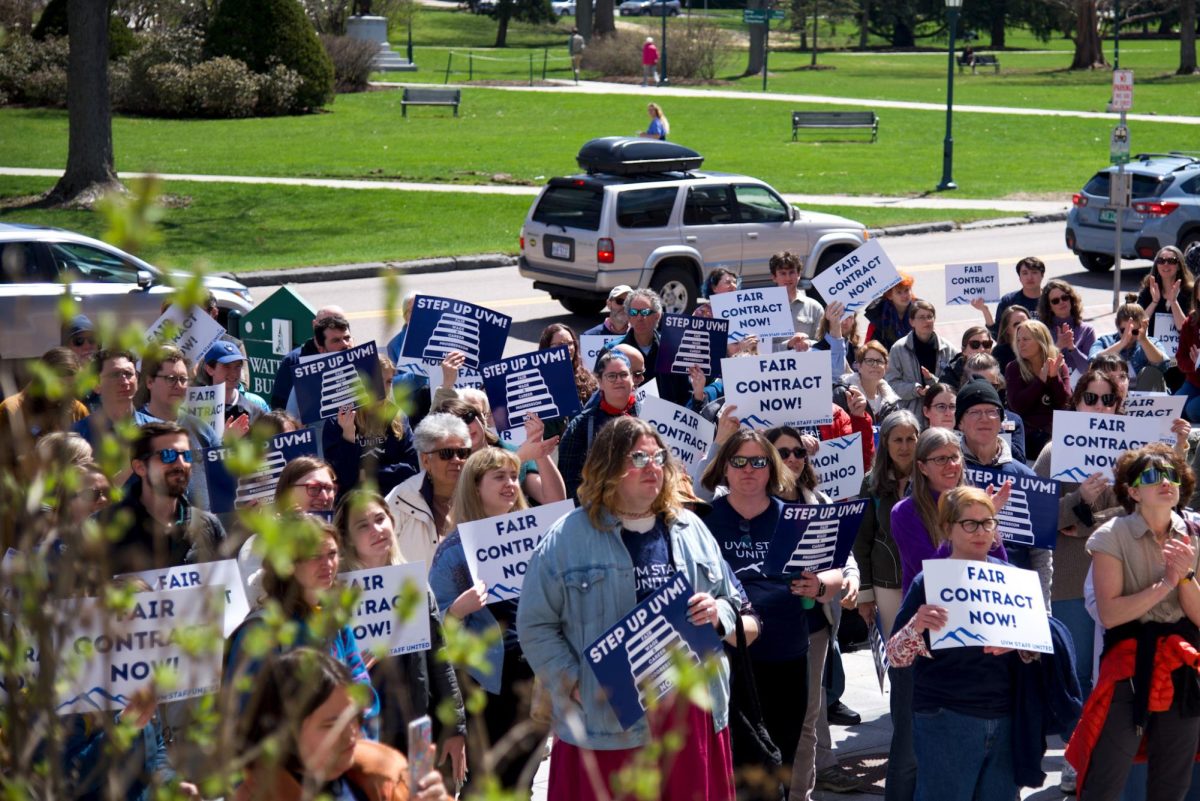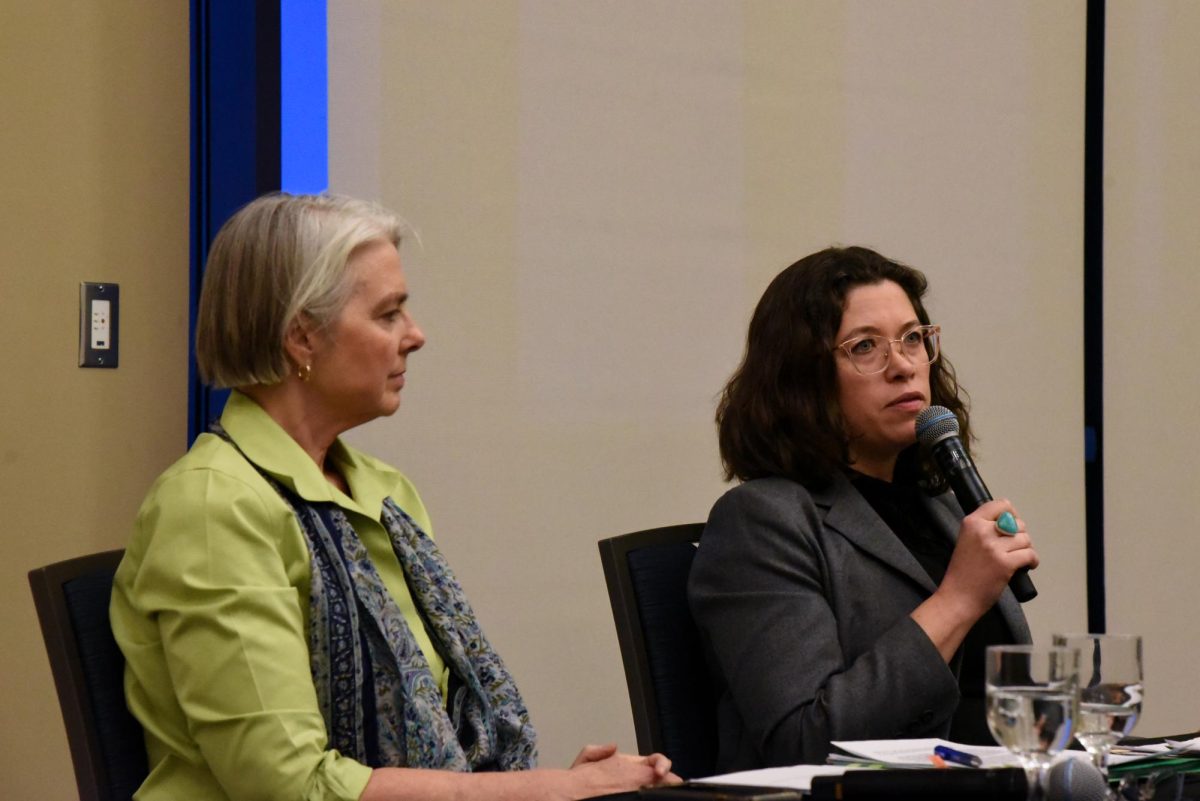? The high-stakes accreditation process has a way of concentrating the mind of a dean whose academic program is under the gun. Maybe that’s why School of Natural Resources Dean Don DeHayes suggested last year, when the school’s forestry program was up for review by the august Society of American Foresters, that the department forgo accreditation entirely. “I went to the faculty eight months before the accreditation process began and said, ‘Do we want to do this?'” DeHayes says. “The faculty said, ‘Yeah, we have to.’ I said, ‘Why?’ They debated that issue for eight months.” At the heart of DeHayes’ inquisition was an insight shared by many foresters in higher education, including UVM’s faculty, who came to support the dean’s viewpoint: the demands of modern forestry and the strict requirements of SAF, the field’s only accrediting body, are out of alignment. UVM’s formal decision not to seek SAF accreditation last December has put it at the center of modern forestry’s efforts to redefine itself, and many other schools are keenly interested in the outcome. “People are watching,” says Michael Washburn, vice president for forestry and marketing at the Forest Stewardship Council and a former faculty member at Penn State and Yale. DeHayes is no casual observer of forestry programs. As president-elect of the National Association of Professional Forestry Schools and Colleges, the much published professor of forest biology plays an active role in curricular reform in the field, adding even more portent to UVM’s decision. In addition to traditional timber extraction, forestry now demands expertise in areas like biodiversity, conflict resolution and recreation, “yet SAF hasn’t grown with the boundaries” of the evolving field, says John Shane, chair of UVM’s forestry department. “Sustainability isn’t even mentioned in the standards,” DeHayes says. In an accredited program, forestry majors who want a broader education need to take all the SAF-required courses and add multiple new ones, Shane “but we still have only four years to do it in.” Something has to give and, in an effort to determine what, the university sponsored a high profile event starting March 16 – the Sustainable Forestry Forum – that attracted players from around the country. More than 60 forestry educators, employers, consultants and public servants came to campus for two days of debate, discussion and brainstorming. UVM will publish the proceeding of the forum in the coming months. A theme that sounded with mantra-like regularity at the event is the need for contemporary foresters to develop integrative thinking and communications skills. To accommodate yet more coursework designed to build these capabilitiesContinued from Frontparticipants also cottoned to the idea of diversifying forestry programs, with each school offering a specialty. That’s moving in the opposite direction of the SAF “one-size fits all approach,” says Shane, but it may well be the way to go. Under the specialization model, schools would offer a core curriculum shaped by the school’s area of expertise, then allow students to take electives depending on their career interest. “If you were interested in forest technology, you’d take advanced GIS, spatial analysis, and statistics,” Shane says. “If you wanted to be a wildlife biologist, you take lots of biology courses. Because of the core, all UVM grads would look somewhat alike, but they’d be different from Auburn or Maine graduates.” Bubbling just below the surface of the lofty debate was a more practical matter that might also be tagged to the strictures of SAF accreditation: declining enrollments in forestry programs nationwide. The issue, again, is lack of flexibility. “Forestry has been conspicuously inflexible” compared with academic programs it competes with, largely because of the SAF requirements, says Shane, who makes no apologies for paying attention to “marketplace” considerations. Junior Liz Patterson is a case in point for the new kind of student forestry programs need to train – and attract. She’s interested in “land management as a whole, not just timber extraction,” where you have to “understand a lot of different interest groups who have a say over how a forest plan is developed and managed.” A group of forestry faculty recently met to debrief on the forum and consider the next steps in building new courses and curricula. There was a palpable sense of both exhilaration at the wealth of ideas that had been generated and a certain somberness at the sheer number of them. “Follow-up is the key,” Bill Keeton, assistant professor of forestry, tells his colleagues. “Or the forum will amount to a lot of great ideas that come to nothing.” Before dashing off to his next meeting, Shane said the forum was “very, very satisfying,” amounting to a form of validation for UVM’s position by independent thinkers “who weren’t charged with validating us. Let’s not let up.” “People are watching,” says Michael Washburn, vice president for forestry and marketing at the Forest Stewardship Council and a former faculty member at Penn State and Yale. DeHayes is no casual observer of forestry programs. As president-elect of the National Association of Professional Forestry Schools and Colleges, the much published professor of forest biology plays an active role in curricular reform in the field, adding even more portent to UVM’s decision. In addition to traditional timber extraction, forestry now demands expertise in areas like biodiversity, conflict resolution and recreation, “yet SAF hasn’t grown with the boundaries” of the evolving field, says John Shane, chair of UVM’s forestry department. “Sustainability isn’t even mentioned in the standards,” DeHayes says. In an accredited program, forestry majors who want a broader education need to take all the SAF-required courses and add multiple new ones, Shane says, “but we still have only four years to do it in.” Something has to give and, in an effort to determine what, the university sponsored a high profile event starting March 16 – the Sustainable Forestry Forum – that attracted players from around the country. More than 60 forestry educators, employers, consultants and public servants came to campus for two days of debate, discussion and brainstorming. UVM will publish the proceeding of the forum in the coming months. A theme that sounded with mantra-like regularity at the event is the need for contemporary foresters to develop integrative thinking and communications skills. To accommodate yet more coursework designed to build these capabilities, participants also cottoned to the idea of diversifying forestry programs, with each school offering a specialty. That’s moving in the opposite direction of the SAF “one-size fits all approach,” says Shane, but it may well be the way to go. Under the specialization model, schools would offer a core curriculum shaped by the school’s area of expertise, then allow students to take electives depending on their career interest. “If you were interested in forest technology, you’d take advanced GIS, spatial analysis, and statistics,” Shane says. “If you wanted to be a wildlife biologist, you take lots of biology courses. Because of the core, all UVM grads would look somewhat alike, but they’d be different from Auburn or Maine graduates.” Bubbling just below the surface of the lofty debate was a more practical matter that might also be tagged to the strictures of SAF accreditation: declining enrollments in forestry programs nationwide. The issue, again, is lack of flexibility. “Forestry has been conspicuously inflexible” compared with academic programs it competes with, largely because of the SAF requirements, says Shane, who makes no apologies for paying attention to “marketplace” considerations. Junior Liz Patterson is a case in point for the new kind of student forestry programs need to train – and attract. She’s interested in “land management as a whole, not just timber extraction,” where you have to “understand a lot of different interest groups who have a say over how a forest plan is developed and managed.” A group of forestry faculty recently met somberness at the sheer number of them. to debrief on the forum and consider the next steps in building new courses and curricula. There was a palpable sense of both exhilaration at the wealth of ideas that had been generated and a certain “Follow-up is the key,” Bill Keeton, assistant professor of forestry, tells his colleagues. “Or the forum will amount to a lot of great ideas that come to nothing.” Before dashing off to his next meeting, Shane said the forum was “very, very satisfying,” amounting to a form of validation for UVM’s position by independent thinkers “who weren’t charged with validating us. Let’s not let up.”












